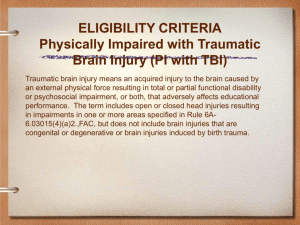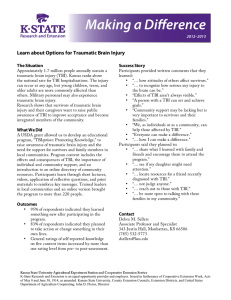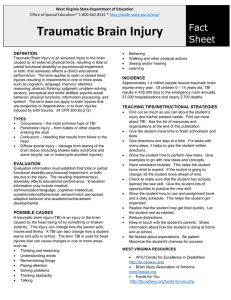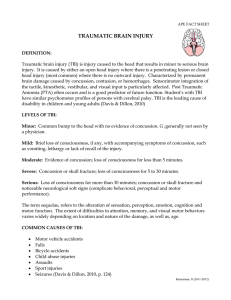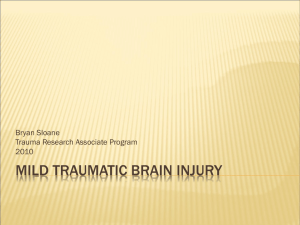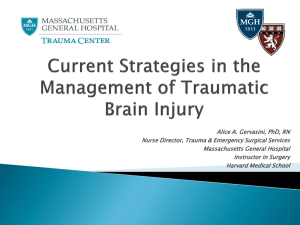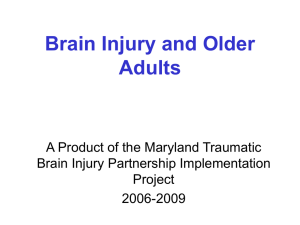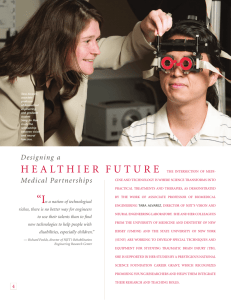October 2013
advertisement
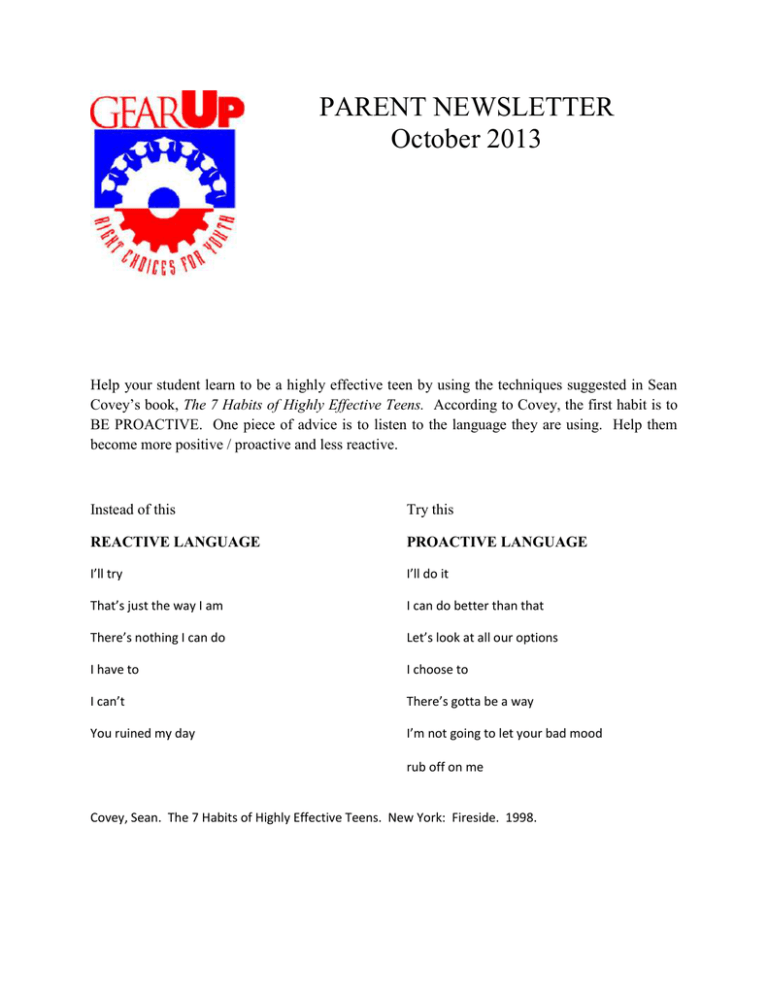
PARENT NEWSLETTER October 2013 Help your student learn to be a highly effective teen by using the techniques suggested in Sean Covey’s book, The 7 Habits of Highly Effective Teens. According to Covey, the first habit is to BE PROACTIVE. One piece of advice is to listen to the language they are using. Help them become more positive / proactive and less reactive. Instead of this Try this REACTIVE LANGUAGE PROACTIVE LANGUAGE I’ll try I’ll do it That’s just the way I am I can do better than that There’s nothing I can do Let’s look at all our options I have to I choose to I can’t There’s gotta be a way You ruined my day I’m not going to let your bad mood rub off on me Covey, Sean. The 7 Habits of Highly Effective Teens. New York: Fireside. 1998. In September we gave you information on the top three careers that your students could pursue. Here are the next three. Medical Records and Health Information Technicians Ten hottest careers rank: 4 Salary Range: $20,850 — $51,510 The medical records and health information technician career field is expected to grow by 20 percent through the year 2018. Organization and evaluation of healthcare records are typically the main responsibility of the medical records and health information technician. These records include information of a patient's symptoms and medical history, to results of examinations and tests, to diagnoses and treatments. Computer Application Software Engineers Ten hottest careers rank: 5 Salary Range: $54,840 — $132,080 The computer software engineer career field is projected to increase by 21 percent by the year 2018. Computer software engineers generally design and develop new computer software systems by incorporating new technologies in a growing range of applications. Professionals in this field analyze users' needs and design computer applications or specialized utility programs using multiple programming languages, depending on the program's purpose. Physical Therapist Aides Ten hottest careers rank: 6 Salary Range: $17,330 — $34,100 With the growing number of individuals with disabilities or limited function, employment in the physical therapist aide career field is projected to increase by 35 percent. Physical therapist assistants and aides are responsible for providing services to help improve mobility, relieve pain or prevent permanent physical disabilities of patients with injuries or disease. Source: BLS Occupational Employment Statistics Source: BLS Occupational Employment Outlook Encourage your student to take computer classes, web design classes, and courses which improve their communication skills. Having excellent written and oral communication skills are a must in every career. Having “people” skills is also important. Help them learn to relate to others in positive ways. The final four careers in the top ten include Fitness Trainers and Aerobics Instructors, Database Administrators, Veterinary Technologists and Technicians, and Dental Hygienists. For more information on these careers, go to www.nmu.edu/gearup 10 things you can do to help your child be successful in high school: Help them learn to say “no.” They may want to join every club, participate in a sports activity, hang out with friends, and have a job. You may need to help them make choices. Encourage them to find a mentor. It could be a teacher, coach, family friend, or a neighbor. Having someone else to talk to is beneficial and can help celebrate their successes. Make sure your child is showing up at school. They cannot learn if they are not there. Be sure they get their homework done. Keep the lines of communication open. Be sure you are asking them open ended questions, not ones where they simply answer yes or no. Explain to them the importance of staying safe. Talk to them about being bullied, or if they are the bully. Do they know who they are getting into a car with? Teach them to be a good friend and tell someone if one of their friends threatens to hurt themselves. Make sure they are getting enough sleep. Are you helping them to set realistic goals? Is the goal to get an A on the next test? Is the goal to become an athletic trainer? Is the goal to get an after school job? What works for your student? Help them get involved in the community. You can lead by example. Are you helping out with the marathon, exercising dogs at UPAWS, walking in support of the Alzheimer’s Association? Get them involved too. Do you know your student’s preferred learning style? Has she or he talked with their teacher about it? For more information on learning styles you can go to: http://www.learning-styles-online.com/overview/ http://sunburst.usd.edu/~bwjames/tut/learning-style/ http://www.edutopia.org/multiple-intelligences-learning-styles-quiz Concussions: The Serious Invisible Injury By Linda Sirois, Future Faculty Fellow at NMU “Did you get knocked out?” This used to be the million dollar question posed to kids injured at play. Whether knocked in the head with a baseball bat, trampled in tackle football, or thrown from a bicycle, the medical decision tree branched in two very different directions from that simple question. If the child answered “No,” then the injury was cleaned, maybe stitched up, and they were sent on their way; if “Yes,” then they were examined more closely. Still, most of us parented with the assumption that children are going to take hard knocks and if they are up and moving then they must be okay, right? Wrong. According to the Brain Injury Association of Michigan (BIAMI), every 21 seconds a person in our country sustains a traumatic brain injury, or TBI, which is defined as an insult to the brain that occurs from an external force and results in some level of impairment of, or disturbance to, cognitive, physical, emotional, or behavioral functioning. The impairment may be mild or severe. Researchers have learned that kid’s brains are particularly vulnerable—especially from repeated blows such as those sustained in organized sports. “The risk of TBI is highest among adolescents, young adults, and those over 75; TBI is the leading cause of death and disability among youth and young adults” (biami.org). The definition of a TBI is frighteningly broad with symptoms that sound difficult to pin down, especially for the milder injuries. Children and adolescents can have a wide range of “normal” behaviors, as parents well know. “It’s hard to take seriously an invisible injury with subtle symptoms that often seem to pass quickly,” write Linda Carroll and David Rosner, in the book The Concussion Crisis: Anatomy of a Silent Epidemic. To complicate matters, brain injury, especially in the young, is cumulative: after the first injury, the risk for a second injury is three times greater; after the second injury the risk of another TBI is eight times greater (biami.org). In the past decade, brain injury researchers have determined that concussion can, and often does, occur without any loss of consciousness or even without a child sustaining a direct blow to the head (Carroll 10-11). Parents and caregivers are the best people to determine any changes in their child’s normal behavior or functioning—which may appear days or even weeks after an injury to the brain. Be aware, watch closely, and educate yourself about brain injury through reputable sources (some listed at the end of the article). Be persistent in advocating for safety equipment, medical intercession, and trust your parental instincts when it comes to your child. You know them better than anyone. For more information on TBI: The Brain Injury Association of Michigan, website www.biami.org; Centers for Disease Control, www.cdc.gov/traumaticbraininjury/tbi; and www.brainline.org, a national resource for living with, treating, and preventing traumatic brain injury.
